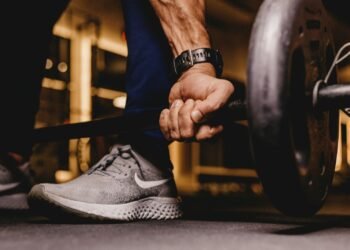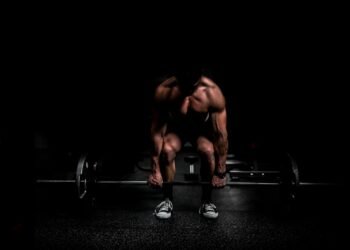Strong, flexible hamstrings aren’t just for athletes — they’re key to healthy movement, injury prevention, and overall strength. Pilates offers a unique approach to strengthening these muscles, focusing on form and control rather than just power.
Whether you’re a Pilates enthusiast or just looking to build more balanced lower body strength, these hamstring exercises in Pilates will engage, stretch, and tone, helping you move with greater ease and stability. In this article, we’ll explore five must-try exercises to unlock your hamstrings and take your fitness routine to the next level.
The Importance of Hamstrings in Pilates
In Pilates, the hamstrings play a pivotal role that extends beyond just building muscle strength. These muscles, located at the back of your thighs, are integral for enhancing flexibility, improving posture, and supporting overall body balance.
Enhancing Flexibility and Strength
Hamstrings are crucial for movements that involve bending, stretching, and maintaining core stability. Regularly engaging these muscles through Pilates can lead to increased flexibility, which is vital for performing various exercises more effectively. Hamstring exercises in Pilates not only build strength but also help in reducing the risk of injury by enabling more fluid motion patterns.
Supporting Daily Activities
Strong hamstrings are fundamental to many everyday activities, such as walking, running, and even sitting. By incorporating targeted exercises into your Pilates routine, you bolster these muscles, leading to improved functionality in daily tasks. The result is a more dynamic and resilient body that can adapt to everyday demands with ease.
Improving Posture and Alignment
The balance and stability provided by the hamstrings are essential for maintaining good posture. In Pilates, the focus on hamstring strength also aids in keeping the spine aligned and reducing strain on the lower back. This not only enhances your Pilates practice but also contributes to better overall body alignment, leading to improved posture and reduced discomfort during prolonged periods of sitting or standing.
Engage your hamstrings in Pilates to not only enhance your practice but also to support and strengthen your body for a wide range of activities.
Single Leg Kick
The Single Leg Kick is a dynamic Pilates exercise that primarily engages the hamstrings, enhancing both flexibility and muscle endurance. By incorporating this move into your routine, you can target and strengthen your hamstrings effectively while also benefiting from overall knee stability and postural improvement.
Instructions:
- Setup: Begin by lying face down on your mat, with your forearms parallel in front and elbows directly under your shoulders, forming a stable base. Extend your legs straight back, pressing your pubic bone into the mat to engage your core and stabilize your spine.
- Execution: On an inhale, kick one leg towards the buttocks with a double beat motion, pulsing the heel towards the back for two quick kicks. Ensure that your hips remain grounded and your core remains engaged throughout the exercise.
- Breathing and Coordination: Coordinate your breaths with the movement—inhale as you prepare, and exhale deeply as you switch legs. This not only aids in core stabilization but also helps with maintaining rhythm and control.
Benefits:
- Targeted Hamstring Strengthening: The repetitive kicking motion directly targets the hamstring muscles, making it an excellent workout for this muscle group.
- Enhanced Flexibility: By consistently practicing this exercise, you can gradually increase flexibility in your hamstrings, which is crucial for better mobility and reducing injury risk.
- Improved Posture: Strengthening the hamstrings contributes to better posture by supporting the lower back and aiding in proper spinal alignment.
Incorporating the Single Leg Kick into your Pilates routine can significantly boost your hamstring strength and flexibility with its focused and controlled movements. Enjoy the benefits of this core-enhancing and muscle-toning exercise as part of a well-rounded Pilates practice.
Shoulder Bridge
The Shoulder Bridge is a standout exercise in Pilates for its ability to engage and strengthen your hamstrings. By lying on your back and lifting your hips towards the ceiling, you’re activating these muscles, which are often overlooked in everyday activities. Here’s how to perform this effective move:
- Starting Position: Lie on your back with your knees bent and feet flat on the floor, hip-width apart. Keep your arms relaxed by your sides, palms facing down.
- Engage Your Core: Before lifting, engage your core by gently drawing your belly button towards your spine. This helps support your lower back throughout the movement.
- Lift and Hold: Press through your feet to lift your hips towards the ceiling, creating a straight line from your shoulders to your knees. Keep your knees aligned over your heels and avoid flaring your ribs. Hold this position for a few breaths, feeling the engagement in your hamstrings and glutes.
- Lower with Control: Slowly lower your hips back to the mat, articulating your spine one vertebra at a time. This controlled descent enhances the exercise’s effectiveness by increasing muscle engagement.
The Shoulder Bridge not only works your hamstrings but also promotes improved body alignment and core stability. It’s a versatile exercise that can be modified to fit different skill levels, making it a staple in numerous Pilates routines. Incorporating movements like this into your workout can significantly enhance strength and flexibility, which are key components in hamstring Pilates exercises. For those looking to deepen their practice, adding variations such as extending one leg at the top can further challenge and engage the muscles.
Roll Over
Engaging the hamstrings while practicing the Roll Over in Pilates offers excellent benefits for flexibility and strength. This exercise is a classic Pilates move that not only challenges your core but also targets your lower body, focusing heavily on your hamstrings.
To start, lie on your back with your arms at your sides. Lift your legs to a perpendicular position, keeping them straight. Slowly roll your legs over your head, aiming to touch your toes to the floor. It’s essential to control your movement throughout the exercise, ensuring your hamstrings remain engaged as your legs ascend and descend.
The Roll Over has several advantages:
- Improves Flexibility: By encouraging a deep stretch in the lower back and legs, this move significantly enhances overall flexibility.
- Strengthens the Core and Hamstrings: The action of lifting and lowering the legs engages the abdominal muscles and provides a focused workout for the hamstrings.
- Promotes Spine Health: The controlled rolling motion helps increase spinal mobility and alignment.
However, it’s crucial to execute this exercise correctly to prevent strain. Beginners might find it challenging to touch their toes to the floor, and that’s okay. Gradually improve your flexibility by gently reaching as far as your body comfortably allows. Remember, Pilates is about precision over intensity.
If you have tight hamstrings, adjusting the range of motion can help you work up to the full Roll Over over time. By integrating this exercise into your routine, you’ll be on your way to stronger and more flexible hamstrings, enhancing the overall effectiveness of your Pilates practice.
Heel Beats
Pilates Heel Beats are an excellent exercise for engaging the hamstrings while also targeting the glutes and core. Although they might seem simple, Heel Beats require focus and control to be effective.
How to Perform Heel Beats
- Start Position: Begin by lying flat on your stomach with your forehead resting on your hands. Keep your legs extended behind you.
- Engage the Core: Before you start the movement, draw your navel towards your spine to engage your core. This helps stabilize your body and focuses the movement on your hamstrings.
- Lift and Squeeze: Gently lift both legs off the mat, keeping them together. Squeeze your glutes and hamstrings to maintain the lift.
- Beat Heels Together: In a controlled manner, tap your heels together in a quick, rhythmic motion. Aim for 8 to 10 taps per set, maintaining the lift.
Benefits of Heel Beats
- Strengthens Hamstrings and Glutes: This movement isolates the hamstrings and glutes, enhancing their strength and endurance.
- Improves Coordination: The rhythm of tapping your heels together refines coordination skills, essential for more challenging Pilates exercises.
- Core Engagement: By keeping your core engaged throughout the exercise, Heel Beats promote spinal alignment and stability.
Tips for Beginners
- Modify the Lift: If lifting both legs is challenging, try raising one leg at a time while the other remains on the mat.
- Focus on Quality Over Quantity: Fewer, controlled taps are more beneficial than many rushed ones.
Incorporating Heel Beats into your Pilates routine can offer a refreshing yet challenging way to target those hard-to-reach muscles, enhancing both strength and flexibility.
Leg Pull Front
In Pilates, the Leg Pull Front is an excellent exercise to target and fortify your hamstrings while also working on overall body stability. This movement not only aims at strengthening your posterior chain but also enhances your core and shoulder endurance.
Performing the Leg Pull Front
- Starting Position: Begin by lying face down on your mat. Place your hands under your shoulders and feet hip-width apart.
- Engage Your Core: Press into your palms and lift your body into a plank position. Ensure that your shoulders are aligned over your wrists, and your body forms a straight line from head to heels.
- Leg Lift: Shift your weight slightly onto one leg and lift the opposite leg towards the ceiling, keeping it straight. Aim to reach a point where your leg is in line with your hips or slightly higher.
- Controlled Motion: Return the lifted leg to the ground slowly and with control. Repeat the movement with the opposite leg.
Tips for Success
- Maintain Alignment: Keep your hips level throughout the movement to avoid any unnecessary strain on your lower back.
- Breathing: Inhale as you prepare to lift your leg and exhale as you lower it, maintaining a steady and controlled breath throughout the exercise.
- Progression: If you’re new to this exercise, consider starting with a shorter plank duration and gradually increasing as your strength improves.
This exercise enhances coordination and stability across key muscle groups, paving the way for improved functionality and performance in daily activities.
Benefits and Modifications
Pilates offers a fantastic way to strengthen your hamstrings, leading to improved posture, flexibility, and muscle tone. Let’s delve into the benefits of these essential exercises and how they can be tailored for different abilities.
Benefits:
- Enhanced Flexibility: Regularly working on these exercises can increase your range of motion, especially in the hips and legs, making everyday movements more fluid.
- Strengthened Muscles: By targeting specific muscles, such as the hamstrings, these exercises help in building strength that supports not only your Pilates practice but also your daily activities.
- Improved Balance and Posture: Strengthening the hamstrings also aids in maintaining proper alignment, which is key for balance and preventing injuries.
- Stress Relief: Pilates is well-known for its calming effects, and these exercises can help in reducing muscle tension and promoting relaxation.
Modifications:
- Single Leg Kick: Beginners can start with smaller movements or perform the exercise with both legs simultaneously to reduce intensity.
- Shoulder Bridge: For added support, place a block or cushion under the sacrum. As you progress, increase the lift of the hips for a deeper hamstring engagement.
- Roll Over: If you struggle with the full roll, try performing the exercise against a wall for support, ensuring a safe and controlled motion.
- Heel Beats: Start with fewer beats and gradually increase the number as your strength improves.
- Leg Pull Front: For those new to this move, begin with knees on the ground, shifting slowly to full extension as your confidence and strength build.
Tailor these hamstring exercises in Pilates to fit your needs and revel in the multitude of benefits they offer.
Conclusion
Incorporating these essential hamstring exercises in Pilates into your routine can significantly enhance flexibility and strength. By focusing on movements like Single Leg Kick and Shoulder Bridge, you’ll not only fortify your hamstrings but also boost your overall Pilates practice. Regularly engaging these muscles helps in maintaining balance and stability, translating well into daily activities. As you continue your Pilates journey, remember to listen to your body and modify exercises to match your skill level. Keep pushing forward, and watch your strength and flexibility skyrocket!
Frequently Asked Questions
Can beginners perform these hamstring exercises in Pilates?
Yes, beginners can perform these exercises with modifications to suit their skill level. It’s essential to focus on proper form and gradually increase intensity as you become more comfortable.
How often should I do Pilates hamstring exercises for optimal results?
For optimal results, incorporate these exercises into your Pilates routine 2-3 times a week. Consistency is key to improving strength and flexibility in your hamstrings.
Will these exercises help alleviate hamstring tightness?
Yes, regular practice of these exercises can help improve flexibility and reduce hamstring tightness. Be sure to stretch properly before and after workouts to maximize benefits.
Are there any risks associated with these exercises?
While generally safe, improper form or overexertion can lead to strain or injury. It’s important to progress at your own pace and consult a fitness professional if you’re unsure about any movements.
Do I need any special equipment to perform these exercises?
Most exercises in this guide don’t require special equipment, making them perfect for home workouts. A mat can provide comfort and support during floor-based exercises.





